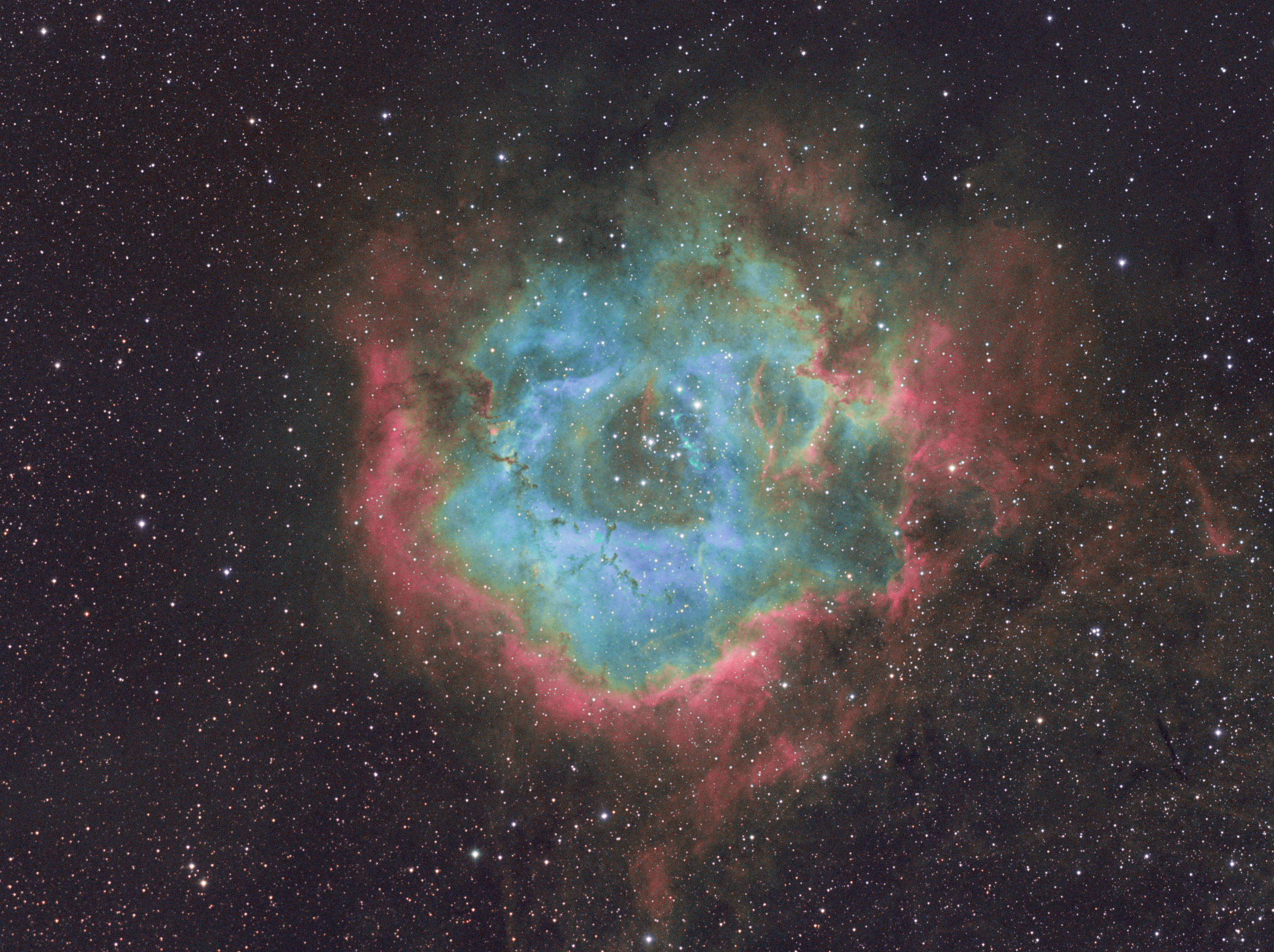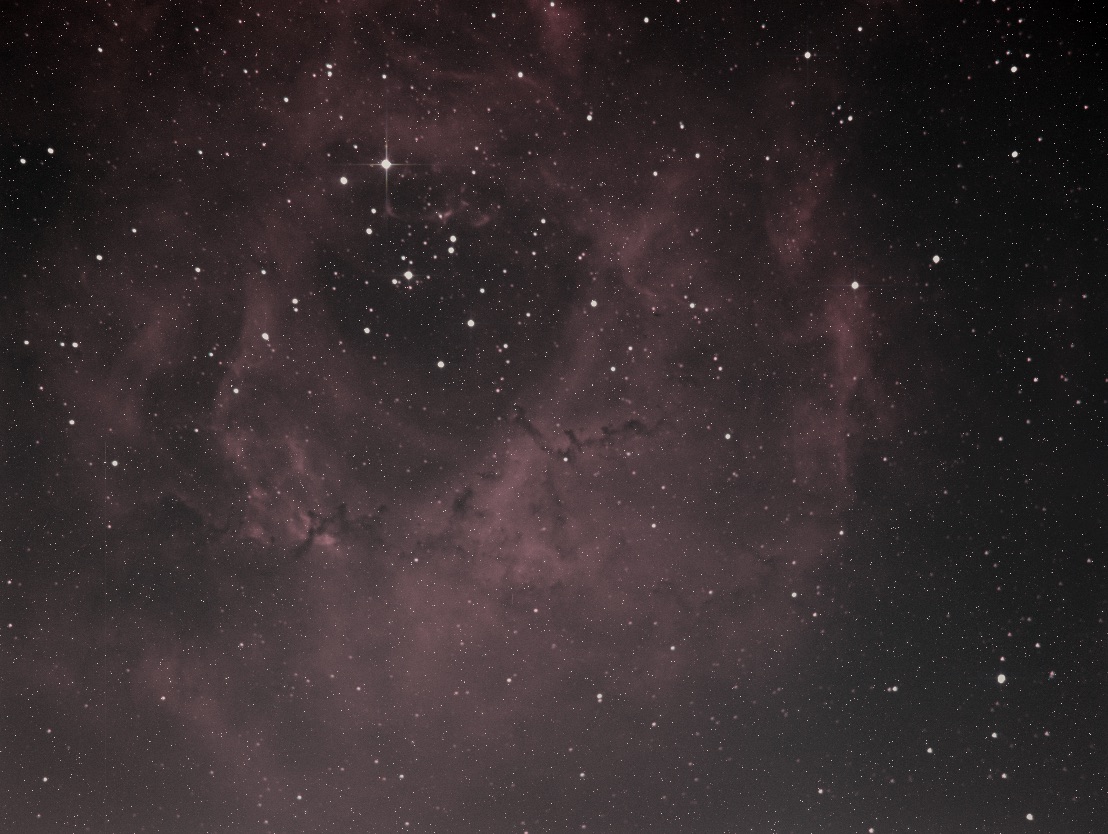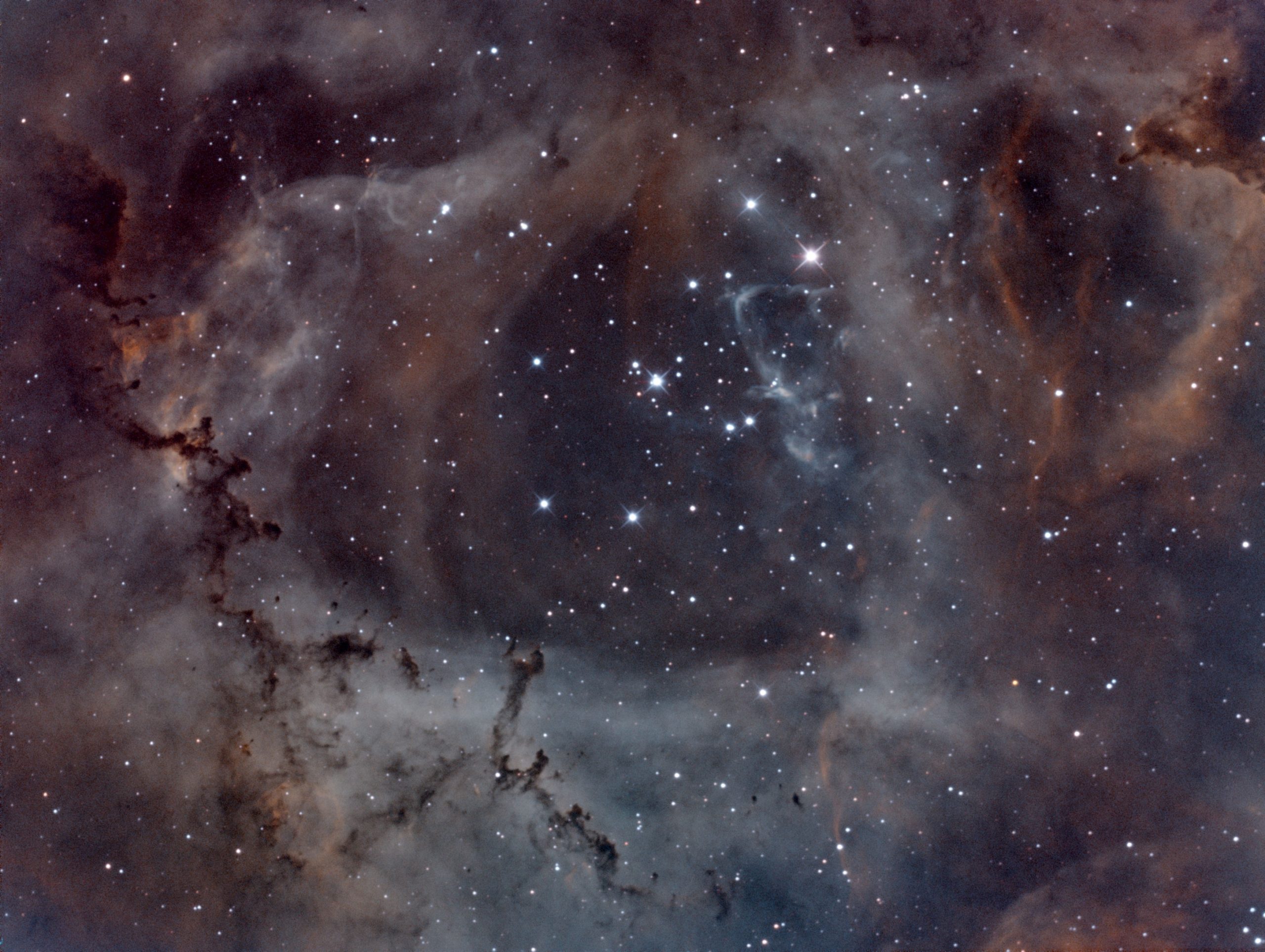
Way back when I started with a DSLR that I already had, and a cheap newtonian telescope, one of the first things I turned to scope toward was the Rosette nebula. I’ve now imaged it 3 times. First with that beginners setup, then again with a better scope and camera albeit too zoomed in to see the whole thing, and thirdly — but not finally — from a different location in San Jose with a telescope better suited to such a gloriously wide target. Let’s go on this journey together.
First up, a simple single-frame with a DSLR mounted directly on to a telescope. This is astrophotography at its grass-roots best. I remember being so thrilled to see the dust lanes in the nebula.

Next up is the same nebula, of course, but this time with the AT8RC scope — which is far too powerful in terms of magnification (focal length) to take this whole beauty in… but here it is, none the less!

This was captured using narrow-band filters, which provides for much greater contrast but also means the image is created in ‘false color’. That is, this isn’t exactly how it would appear visually. Instead it is an approximation, an artistic impression if you will, of the nebula taken by mixing together high contrast but very narrow slices of the spectrum.
As you can tell, the Rosette Nebula has intrigued me since my early days of imaging in 2015. Fast forward to 2018 and I have a much better setup and a few more years of experience in this endeavor — the latter being more important, in all honesty. With an abundance of clear nights, and the telescope just outside my patio door, I was able to produce this:

Yes, wow! This was one of my proudest achievements to date. The ability to achieve some difference between the pink center and deeper red outer was due to the three different narrow band filters I used: Hydrogren-Alpha, Oxygen-3 and Sulfur-2. In the rendition above, I used the difference between these wavelengths of light to render a gradient in pink/red against the darkness of space. But… what if we used those three channels to create something more vibrant?

While this image grabs attention, I think my favorite is actually the pink narrowband image above. In the visual spectrum, the nebula is red, and so imaging it accordingly stays true to that — but the different narrowband wavelengths are seductive none the less!
The final two images were captured using a Williams Optics Star-71 telescope — the original, and I think the best (because I own it!), version with 5 optical elements. The telescope was mounted on an Atlas EQ-6 mount and the imaging camera was my trusty QSI683. The following data was used to create the final two images, all captured with the camera cooled to -30 degrees celsius: